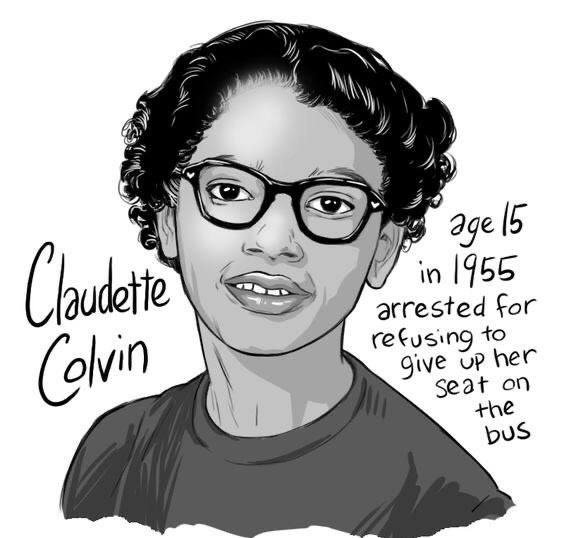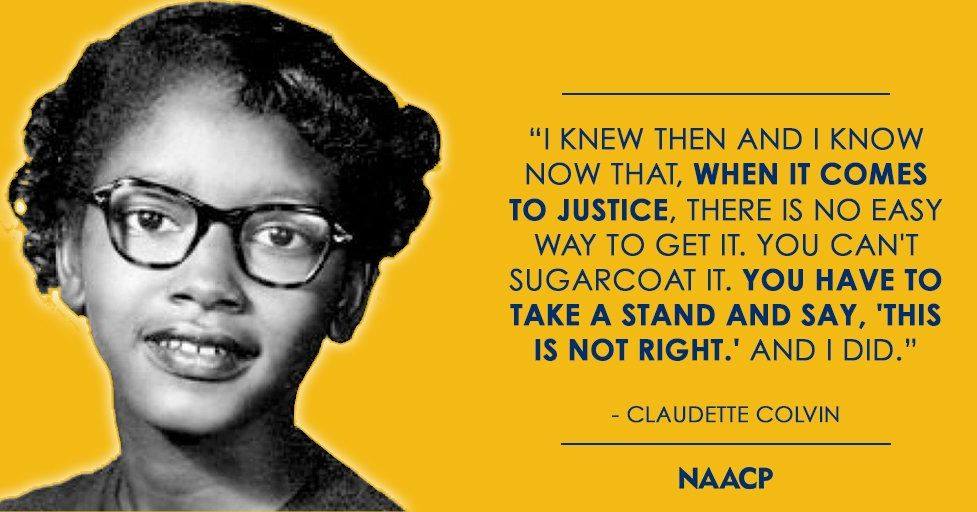
Claudette Colvin, a name often overshadowed by Rosa Parks, played a significant role in the civil rights movement. Before Parks famously refused to give up her seat on a bus, Colvin took a stand against segregation in Montgomery, Alabama. In this article, we will delve into 11 fun and lesser-known facts about Claudette Colvin, shedding light on her inspiring journey and the indelible mark she left on history.
Early Act of Defiance
On March 2, 1955, at the age of 15, Claudette Colvin refused to give up her seat to a white passenger on a segregated bus in Montgomery, Alabama. This act of defiance occurred nine months before Rosa Parks’ similar action and played a pivotal role in the fight against segregation.
Legal Challenge to Bus Segregation
Claudette Colvin was one of four plaintiffs in the landmark court case Browder v. Gayle, which ultimately led to the Supreme Court ruling that segregation on Montgomery buses was unconstitutional.
Youthful Courage
Colvin’s courageous act at such a young age demonstrated her determination and commitment to justice. Her bravery in the face of adversity inspired many others to join the fight against segregation.
Community Support
Despite facing backlash and condemnation from some in the community, Claudette Colvin also received support from civil rights activists, including Rosa Parks and E.D. Nixon. Their encouragement helped amplify her voice and the cause she represented.
Impact on the Montgomery Bus Boycott
Claudette Colvin’s arrest and subsequent involvement in the legal battle against bus segregation significantly influenced the Montgomery Bus Boycott. Her bravery set the stage for the historic year-long boycott that followed, further challenging racial segregation laws.
Unsung Heroine

While Rosa Parks became the face of the Montgomery Bus Boycott, Claudette Colvin’s contributions often went unrecognized for years. Her role in the civil rights movement has gained more recognition in recent times, highlighting her rightful place in history.
Life After the Civil Rights Movement
After her involvement in the civil rights movement, Claudette Colvin faced difficulties in her personal life. She worked as a nurse’s aide and struggled with financial challenges but remained committed to advocating for racial equality.
Recognition and Honors
In 2000, Claudette Colvin received the Fred L. Shuttlesworth Human Rights Award. She has also been recognized by various organizations for her courage and contributions to the civil rights movement.
Speaking Out for Education
Colvin has been an advocate for education and believes in the power of knowledge to create positive change. She has spoken at schools and events, inspiring young people to stand up for their rights and pursue education as a means of empowerment.
The Claudette Colvin Story
In 2009, a book titled “Claudette Colvin: Twice Toward Justice” by Phillip Hoose was published. The book delves into Colvin’s life, her courageous actions, and her role in the fight against segregation.
An Enduring Legacy
Claudette Colvin’s legacy serves as a reminder of the countless unsung heroes who contributed to the civil rights movement. Her bravery and resilience continue to inspire generations to stand up against injustice and fight for equality.
Final Thoughts
Claudette Colvin’s fearless act of defiance and her contributions to the civil rights movement deserves recognition and appreciation. Her story serves as a powerful reminder of the countless individuals who stood up against injustice and fought for a more inclusive society. Through her bravery, Claudette Colvin left an indelible mark on history, inspiring future generations to continue the struggle for equality.
Frequently Asked Questions (FAQs)
Why is Claudette Colvin not as well-known as Rosa Parks?
While Claudette Colvin’s actions preceded Rosa Parks’ famous stand, Parks’ case gained more attention and became a catalyst for the Montgomery Bus Boycott. Additionally, societal factors and strategic considerations influenced the choice of Parks as the figurehead of the movement.
How did Claudette Colvin’s actions contribute to the civil rights movement?
Claudette Colvin’s refusal to give up her bus seat and her involvement in the legal battle against segregation set an important precedent. Her actions inspired others, brought attention to the cause, and contributed to the momentum that led to the Montgomery Bus Boycott and the eventual desegregation of public transportation.
What challenges did Claudette Colvin face after her involvement in the civil rights movement?
After her involvement in the movement, Claudette Colvin faced personal challenges, including financial difficulties. She also dealt with the pressures of being a young activist in a deeply divided society.
How has Claudette Colvin’s role in history been recognized in recent years?
In recent years, there has been a growing recognition of Claudette Colvin’s contributions to the civil rights movement. Her story has been shared through books, documentaries, and educational programs, ensuring that her role is acknowledged and celebrated.
What is Claudette Colvin doing today?
Claudette Colvin lives a private life in New York City. While she has mostly stayed out of the public eye, she continues to be an inspiration to those who learn about her story and her fight for justice.
Was this page helpful?
Our commitment to delivering trustworthy and engaging content is at the heart of what we do. Each fact on our site is contributed by real users like you, bringing a wealth of diverse insights and information. To ensure the highest standards of accuracy and reliability, our dedicated editors meticulously review each submission. This process guarantees that the facts we share are not only fascinating but also credible. Trust in our commitment to quality and authenticity as you explore and learn with us.
